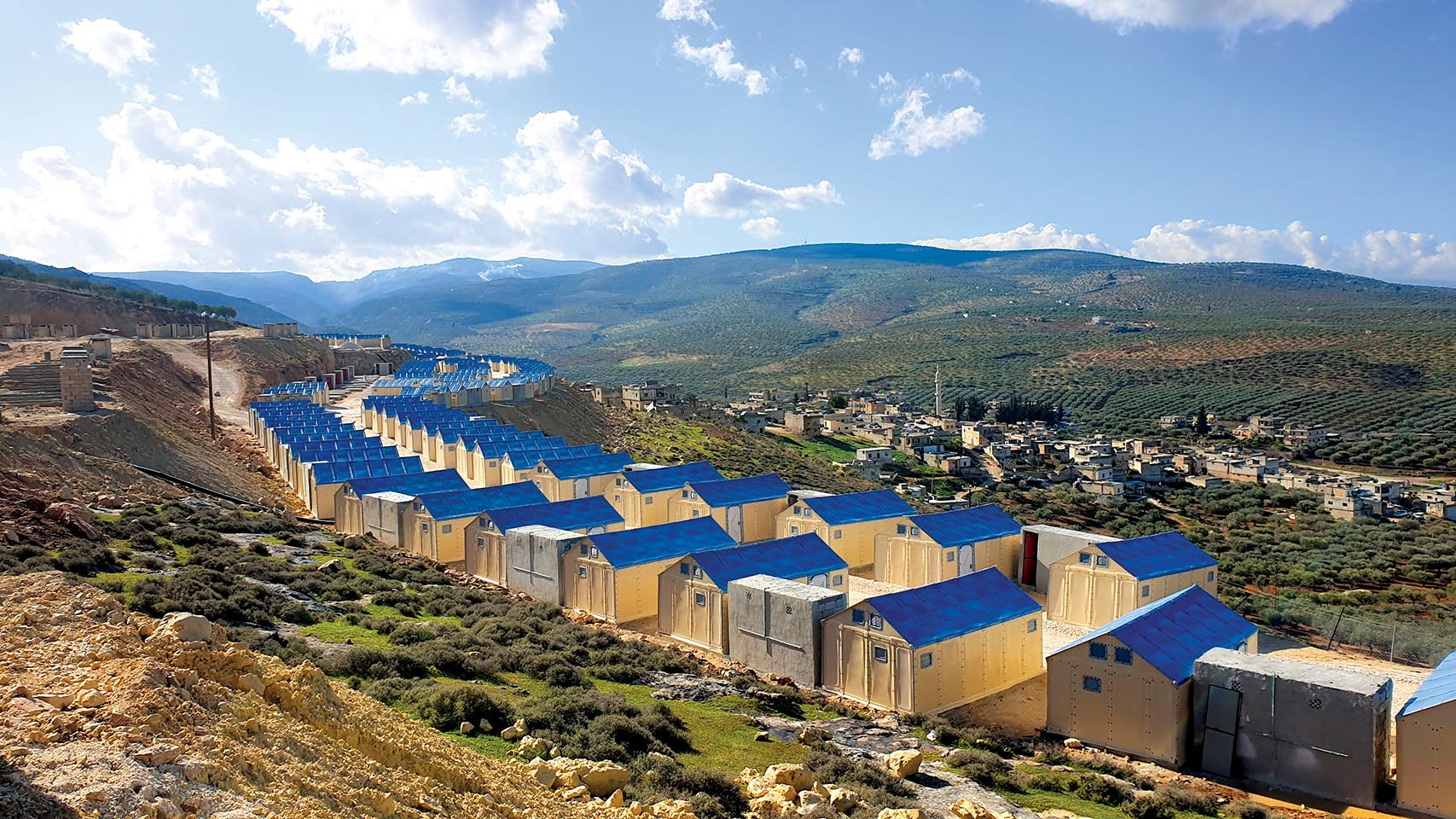What do IKEA and Airbnb have in common? They are both part of a “global shelter imaginary” — a dangerous new trend in humanitarian aid, writes geography professor Daniel Monk in a new book.
When the social enterprise Better Shelter unveiled its alternative to tents for refugee camps in 2015, it took the humanitarian world by storm. A moderately durable shelter that could be assembled in four hours, the units came in two flat boxes that could be easily shipped in bulk on shipping containers. The design received funding and logistical support from the IKEA Foundation, won architecture awards, and was deployed by the U.N.’s refugee agency UNHCR to camps around the world.
There’s an issue with the shelters, however, says geography professor Daniel Monk: They are solving the wrong problem. “Lack of shelter is not the fundamental problem that the displaced people of this world face,” says Monk, who is also the George R. and Myra T. Cooley Professor of peace and conflict studies. “The fundamental problem they encounter is a lack of rights.” He explores this crucial difference in The Global Shelter Imaginary: IKEA Humanitarianism and Rightless Relief (University of Minnesota Press, 2021), co-written with his former student at Harvard, Andrew Herscher, now an architecture professor at the University of Michigan.
Monk and Herscher use the term “global shelter imaginary” to refer to practices that prioritize the appearance of providing assistance to refugees over actually providing meaningful legal protections guaranteed under international conventions. For example, Monk says, there is nothing inherently wrong with Better Shelter: “I think it is a well-intentioned organization.” But for refugees living in camps for short periods of time, tents could help many more people at a much lower cost. And for those living in camps for long periods, the structures provide the appearance of a solution while papering over the real issue. “The majority of displaced people are stuck in a kind of limbo where they cannot return to their country of origin, where they nominally have the rights of citizens, and they are neither permitted to settle where they have landed, nor to move on to another country,” Monk says. “That’s a condition that some people live in for decades — a sort of perpetual rightlessness. The Better Shelter is a material artifact of that suspended animation.”
Theoretically, that condition should be alleviated by international human rights conventions that obligate countries to take in refugees who are victims of political violence and displacement. Instead, countries, including the United States, have made it more difficult than ever for refugees to qualify and apply for asylum, carving out exceptions for certain groups or constraining border crossings to gain admittance while their applications are considered. “The global shelter imaginary is how all of those processes get normalized,” Monk says, “and architecture plays a really important role in that.”
He compares the phenomenon to “greenwashing” for environmental issues, whereby companies give the appearance of solving a problem while actually failing to address the underlying issues they themselves help to cause. “Instead of having to come up with actual solutions, the image of architecture stands in for a right that is disappeared,” Monk asserts. Promotional videos produced by the UNHCR feature refugees enthusing about the shelters, rather than pleading their cases. “Their situation is infinitely worse because they are expected to regularly speak well of the conditions under which they are living,” he says. “Basically, they only get to appear as a subject of humanitarian action, not as someone with political claims or agency.”
The true solution to the crisis of displaced people, Monk says, is “political, not architectural.” And yet, the humanitarian community keeps going in the wrong direction “by pointing to plastic huts as solutions to dispossession,” he adds. The latest iteration of the global shelter imaginary, according to Monk, is a program started by Airbnb called Open Homes (now Airbnb.org), through which people volunteer to host refugees. The program essentially privatizes humanitarian relief, while doing little to address the issue. Only a few thousand people are able to take advantage of the program, and to do so, they have to jump through hoops to gain asylum — leaving out the vast majority of displaced people in refugee camps, squatters camps, and cities who are prevented from seeking asylum. “It’s nothing more than a fig leaf,” Monk says. “I’m interested in solving a broader sociological problem.”

